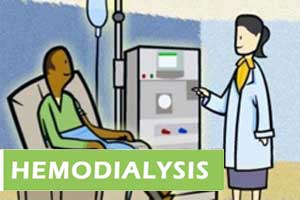- Home
- Editorial
- News
- Practice Guidelines
- Anesthesiology Guidelines
- Cancer Guidelines
- Cardiac Sciences Guidelines
- Critical Care Guidelines
- Dentistry Guidelines
- Dermatology Guidelines
- Diabetes and Endo Guidelines
- Diagnostics Guidelines
- ENT Guidelines
- Featured Practice Guidelines
- Gastroenterology Guidelines
- Geriatrics Guidelines
- Medicine Guidelines
- Nephrology Guidelines
- Neurosciences Guidelines
- Obs and Gynae Guidelines
- Ophthalmology Guidelines
- Orthopaedics Guidelines
- Paediatrics Guidelines
- Psychiatry Guidelines
- Pulmonology Guidelines
- Radiology Guidelines
- Surgery Guidelines
- Urology Guidelines
First catheter-based system for vascular access for hemodialysis patients

The two catheter based devices designed to create a connection to veins and arteries in patients with chronic kidney disease who need hemodialysis bagged marketing permission from the U.S. Food and Drug Administration. The FDA granted marketing authorization of the Ellipsys Vascular Access System to Avenu Medical and everlinQ endoAVF System to TVA Medical, Inc.
FDA granted marketing authorization for the use of the Ellipsys Vascular Access System and the everlinQ endoAVF System to make an arteriovenous (AV) fistula for patients who need hemodialysis access.
Hemodialysis utilizes a dialyzer, or artificial kidney, to filter a patient’s blood outside of their body. Before patients can start dialysis, however, they need to have an AV fistula created. An AV fistula is traditionally made by surgically joining an artery and a vein under the skin in the arm. After some time, the mature vein can then receive the two needles used for each hemodialysis session. Surgically created AV fistulas typically take several months to heal and for the vein to mature before being usable for hemodialysis.
The devices are designed to create AV fistulas percutaneously (through the skin). A catheter is inserted into a blood vessel in the arm and is guided to the site of the planned AV fistula. The devices then deliver energy to form a connection between an upper forearm artery and an adjacent vein. The Ellipsys Vascular Access System uses one catheter, the everlinQ endoAVF System uses two catheters.
“Dialysis is a necessary and life-saving procedure for thousands of individuals. With today’s action, there will be additional, less-invasive vascular access options for patients who will require hemodialysis,” said Bram Zuckerman, M.D., director of the Division of Cardiovascular Devices in the FDA’s Center for Devices and Radiological Health.
For the Ellipsys Vascular Access System, the FDA reviewed data from a non-randomized, multi-center study of 103 patients. The Ellipsys Vascular Access System was used in a procedure to create an AV fistula in these patients, of which 92 patients (89.3 percent) met the criteria for a usable AV fistula within three months after the procedure. Almost all patients (96.1 percent) required an additional procedure (such as balloon angioplasty) in the first 12 months to maintain the fistula.
For the catheter everlinQ endoAVF System, the FDA reviewed data from a non-randomized, multi-center study of 60 patients, in addition to supporting data from three other studies and clinical use of the device outside the U.S. The everlinQ endoAVF System was used in a procedure to create an AV fistula in these patients. In the main study, 52 patients (86.7 percent) met the criteria for a usable AV fistula within three months after the procedure. Almost all patients (96.7 percent) required an additional procedure at the time the fistula was created, while 28.3 percent of patients required an additional procedure (such as balloon angioplasty) in the first 12 months to maintain the fistula.
Both devices are contraindicated, or should not be used, for the creation of anastomoses (connections) in vessels that are less than two millimeters in diameter or too far apart (for example, in the wrist or in the hand). For both devices, complications include blocking (occlusion) or collapse (stenosis) of the fistula, bruising and need for additional procedures.
The Ellipsys Vascular Access System and everlinQ endoAVF System were reviewed through the De Novo premarket review pathway, a regulatory pathway for some low to moderate risk devices of a new type. This action also creates a new regulatory classification, which means that subsequent devices with the same intended use may go through the FDA’s 510(k) process, whereby devices can obtain marketing authorization by demonstrating substantial equivalence to a predicate device.

Disclaimer: This site is primarily intended for healthcare professionals. Any content/information on this website does not replace the advice of medical and/or health professionals and should not be construed as medical/diagnostic advice/endorsement or prescription. Use of this site is subject to our terms of use, privacy policy, advertisement policy. © 2020 Minerva Medical Treatment Pvt Ltd